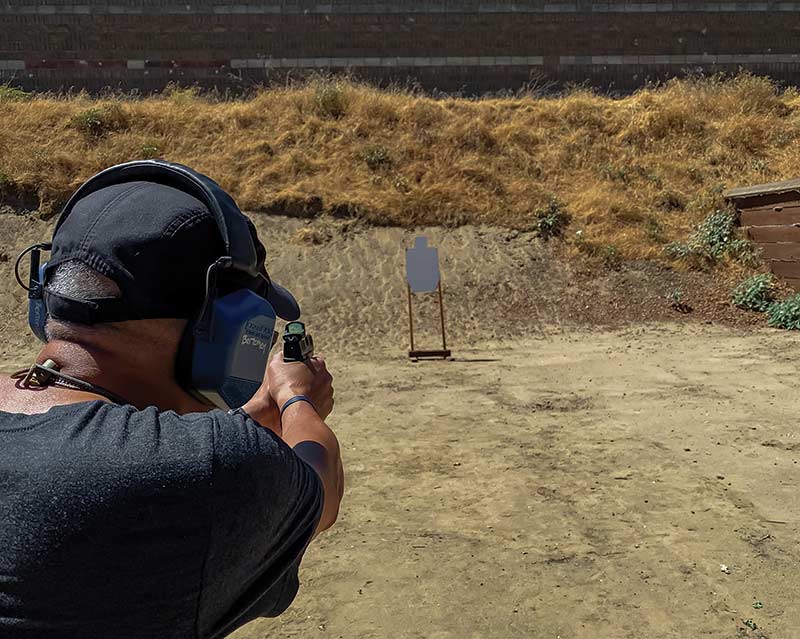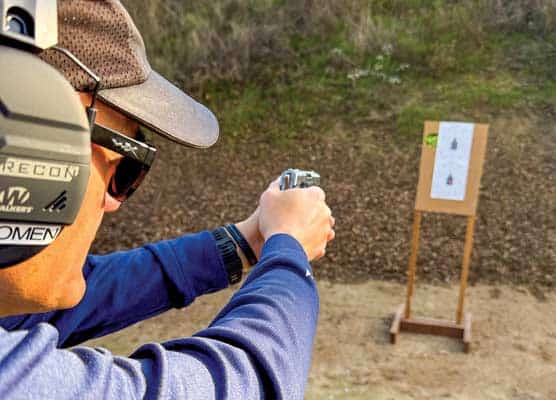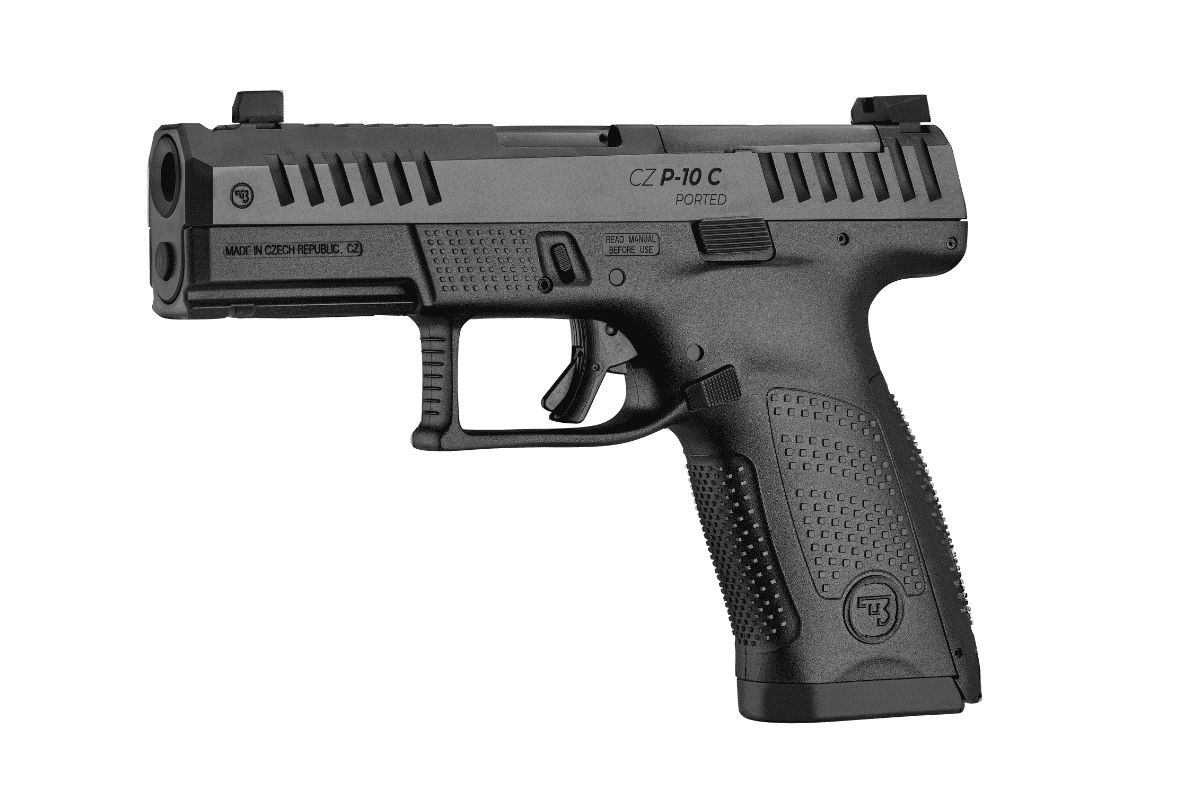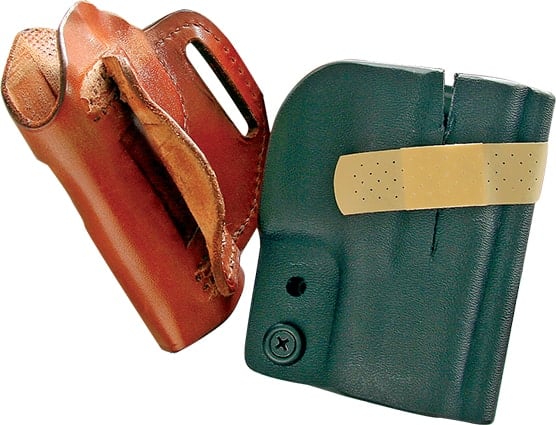Guidelines To Save Your Life
10 Rules of Concealed Carry
When it comes to carrying a concealed firearm, there are 10 specific rules everyone should follow.
1. Always Carry a Gun.
While this certainly is a “no-brainer,” I carry a gun everywhere unless someone with legal authority tells me I cannot. As you know, non-permissive environments are targeted venues. I ignore the signs in front of places that have a gun covered by a red circle with a line through it. I tell my wife as we are entering the store, “The sign has a silhouette outline of a Beretta M9; apparently, this store doesn’t like Berettas. Good thing I’m not carrying a Beretta!” Never be passive about your Constitutional rights.
(Editor’s Note: Do be aware different states apply different legalities to “no carry” signs. You are responsible for your choices.)
When CCW or Constitutional carry students ask me what kind of gun they should purchase, I (after talking to them about their habits and wardrobe) usually recommend two guns. One should be their fighting gun, along the lines of a GLOCK 19 or a SIG SAUER P320. The other should be something suitable for deep cover. It should be pocket-sized, for the times when a larger gun just
won’t do.
I always have an NAA pocket revolver with me. On duty, it was the backup to my backup. If you’re the kind of person who doesn’t leave a thing to chance, you can join the NAA club also. They are inexpensive, and I have several.
2. Carry the Most Effective Cartridge Your Wardrobe Allows.
Note this rule does not say “largest caliber.” The most effective caliber is the one the user can shoot competently, practice reasonably and
carry discreetly.
Regarding the ability to shoot competently, we are talking about the relationship between the practicality of the cartridge and the overall usability of the gun. Is ammunition prohibitively expensive? Is the recoil too punishing to practice? Is there a holster available?
For reasonable practice, consider price and availability of a cartridge. I like to carry common calibers like 9mm and .38 Special. Their abundance drives the price of loaded cartridges and components down in normal market conditions. If the practice ammo for this caliber is prohibitively expensive, this is not your cartridge. This logic also is a consideration if society ever goes “Walking Dead.” Your apocalypse partner is more likely to have 9mm than .455 Webley.
For competence, I have a basic rule: The gun I carry must be able to deliver a head shot, on demand, at 7 yards. It must regularly shoot a 4″ circle at 7 yards. Don’t misunderstand this point. Any quality gun can shoot this accurately. However, I can’t do this with every gun, just one that agrees with me. This is a minimum standard. When I test a gun/cartridge combination, this is the first thing I do.
The selection of wardrobe and firearm should be a series of negotiated compromises. The factors should include the training standards of the user, the style and quality of the holster and design of the firearm. I consider the weight of a gun a priority. Part of the “print” of a concealed firearm includes a sloping waistband.
I have a GLOCK 38. It shoots well, and it is quite reliable. If I’m carrying this gun in a gunfight, I would bet on me. The cartridge does very well in terminal ballistic tests. However, .45 GAP ammo is uncommon, few make holsters and .45 GAP is easily confused with similar-looking ammo. The GLOCK 38 stays in the safe.
The higher the quality of the holster, the better it will conceal and secure the gun. I always tell people to use fitted holsters rather than “universal fit” ones. The exception to this rule is when one carries in the pocket. For my compact and full-sized guns, I go with Bravo Concealment. They are secure, allow for quick reholstering and have a unique system for pressing the butt of the gun into the body. Blackhawk’s new Stache system really works for appendix carry.
3. Use Defensible Language.
There are two defensible language rules one must learn: cause and effect, and effective verbal commands.
If there are witnesses to your defensive activity, it is important your language convinces them you are “in the right.” Your purpose is to affect the psychology of the moment. Obviously, if you are not in the right, do not even attempt to use a firearm.
Before, and while something is happening, repeat, “Call the police!” in the presence of witnesses. Say it as many times as you can before and after a critical incident without it sounding like mental instability. Your witnesses need to “perceive” you are willing to deal with the justice system, and therefore must be “in the right.” You want your witnesses to say, “Yes, he was telling us to call the police while he was pointing the gun at
that guy.”
I have been dispatched to incidents where the suspect has heard someone say, “Call the police,” and reported this to the police. This has proven to be very enlightening when the dust settles.
The same applies to dialing 911, if you are in a position to make the call. Whoever calls first is often perceived as the “good guy” — sometimes even to responding officers.
Practice this line: “I wish to remain silent and contact my attorney.” Do not make a statement, or even a tacit gesture, regardless of how minor this statement might seem to you. Even if you are an attorney, tell those on scene you wish to contact your attorney. Exercise caution volunteering anything.
You have specific rights. Exercise your right to remain silent, and demand to speak to your attorney. If you are taken into custody, go along with the program and let the dust settle.
Cause-and-effect language is simple. Communicate to the person if they continue their current course you will be forced to shoot. Use “Don’t make me shoot you” or “Don’t, or I’ll shoot.” Post incident, your explanation, moderated by your attorney, has to be something like, “I told him he was forcing me to shoot him. I said, ‘Drop it, or I’ll shoot.’”
If you notice, I started the statements with a hard “D” sound, rather than saying “Stop or I’ll shoot” or something similar. Use a “G” or a “D” sound for verbal commands rather than an “S” or an “F” sound, like “Stop!” or “Freeze!” In the psychology of the moment, verbal commands using the stoppage or quick release of air get the attention better.
4. Emotional and Physical Fitness are Essential.
I know there are plenty of people who strap on a gun thinking, “I can handle anything.” I can tell you from personal experience critical incidents are messy and emotionally disturbing. No one can witness emotionally disturbing scenes and be unscathed. The most effective strategy is inoculation. Emotional health is addressed before one gets into an overwhelming circumstance, not after.
Physical fitness is part of a comprehensive personal-defense plan. I’m not telling you to enter CrossFit Games, although I’m “thumbs up” on this. What you do need to do is get your heart rate up regularly. This is one form of inoculation.
Emotional inoculation is a long-term mental health plan. Before you carry a gun, discuss “what if” situations with family members. Make certain you have whatever insurance coverage is recommended to protect you in the aftermath. Make sure your relationships include someone in whom you can confide and trust.
5. Establish a Family Exigency Plan.
My wife and I have a tacit signal that says, “Separate from me and move the kids to safety.” Usually, this meant I sensed someone recognized me out of uniform, but it could also mean a general state of danger.
Regardless of which family member has the CCW, you become a CCW family. In every critical situation, there will be a gun. Even if other family members don’t carry a gun, they need to know about yours, your capabilities and what you’ll do in case of an incident. For example, “If this happens, Daddy will probably be handcuffed, and that’s okay because …” This is also part of the inoculation process.
I’ve taken family members to the range with me over the years and have had plenty of discussions with them. As a police officer, I was very particular about being a Gray Man off duty. Family members need to know you don’t intervene unless forced to intervene. They need to know things they do could force that intervention.
6. Practice.
I occasionally help my friends at M2 Firearms Training with their CCW qualification. For the most part, the students are genuinely interested in training techniques and practice when they can. Occasionally, they get students just “punching their ticket for their permit” and their lack of practice is evident. This is not only an unhealthy attitude, but it may also be a costly one. If one is unwilling to practice, I recommend leaving the guns at home.
Practice sessions need to have goals. Otherwise, shooting sessions are just plinking. Please do not misunderstand: I am a serial plinker. I often shoot for the pure pleasure of moving lead from one side of a range to the other.
Practice, however, has to have a training goal. For example, I do simple one-and-one drills to practice magazine changes and incorporate other training into magazine changes. I do failure drills. I shoot hostage targets. You get the picture.
A one-and-one drill starts with a full magazine and one with a single round. Using the single-round magazine, charge the chamber and holster the gun. Shoot the target. You’ll get a slide lock. Insert the full magazine and drop the slide. Swap magazines and reholster. Repeat.
7. Use the Radar.
A person whose head is on a swivel, in “Condition Yellow,” is the person who is prepared for anything. Having interviewed both victims and witnesses in my career, I can tell you an observant and alert person is a less likely prospect for a personal crime. A person who pays attention to their surroundings does not go unnoticed by felons.
When just walking around, I scan for cover. I don’t consciously think about it — it comes from years of looking for cover while rolling up on hot calls. Your general attitude becomes habit. Your radar should be conscious of exits, people, assets and hazards. The idea is to be ready without burning oneself out.
8. Be a Good Witness.
I would much rather be a witness than a defendant. Your goal is to use a firearm as a last resort.
In my martial arts training, we practice as many escape techniques as we do any other technique. If I must fight, I’m not playing. However, if I can run, my pride does not get in the way. I run.
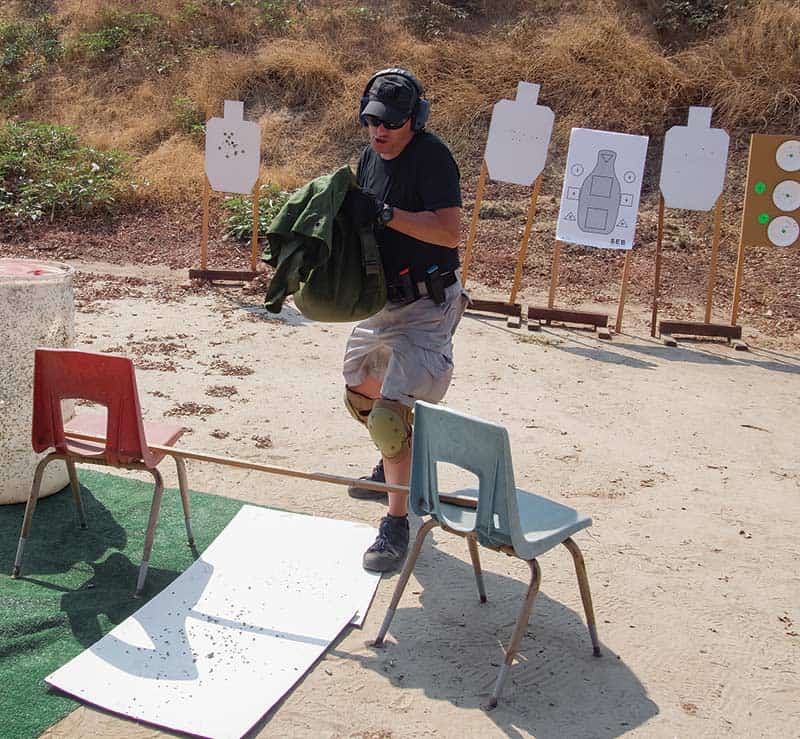
There is a vast difference between shooting and fighting with a gun. Training for
a gunfight should include drills that kick up the heart rate and improve other skills
like decision-making. Lindsey has devised a training course that includes running and
throwing a bag of sand around. Some scenarios should include delivering an
“acceptable shot.” Image: Richard Macchia
9. Be Prepared to Use Something Other than a Firearm.
What do you do when you are getting out of your vehicle and a person who appears to be in a mental crisis starts walking toward you with a knife in their hand? The correct answer is to get back in your vehicle.
The problem with carrying a firearm is “When the only tool you carry is a hammer, everything looks like a nail.” The firearm is a tool of last resort. When you use it, you will be judged by people who know little if anything about self-defense.
I carry an ASP Palm Defender. It stays on my keychain, and since it is refillable, I change the cartridges often. True story: I have raised my ASP Palm Defender, turned the safety off and pointed it at someone — inches from their face — ready to dispense. This person had no idea he was facing a cloud of irritant. Most people don’t recognize this tool, which is why I carry it.
10. Shooting is Different than Fighting with a Gun.
Fighting with a gun is a dynamic skill, and there are many factors differentiating it from just shooting at targets. My friends who teach firearms classes spend as much time on decision-making as they do on shooting skills.
The level of training will drive the decision-making process. For example, I practice hostage rescue shots. I know the limitations of my ability, but I also know at which point I can competently address the sinus cavity. If forced to rescue a hostage with a shot, I’m confident I can deliver the shot.
Finally, we are always talking about having a combat mindset. I like this kind of thinking (obviously!), but I would pick an even-tempered gun carrier over a hothead any time. If you are known to lose your cool, please pick another means of defense. Above all, stay safe.
For more info: NorthAmericanArms.com, BravoConcealment.com, Blackhawk.com, ASP-USA.com

Get More Carry Options content!
Sign up for the newsletter here:




